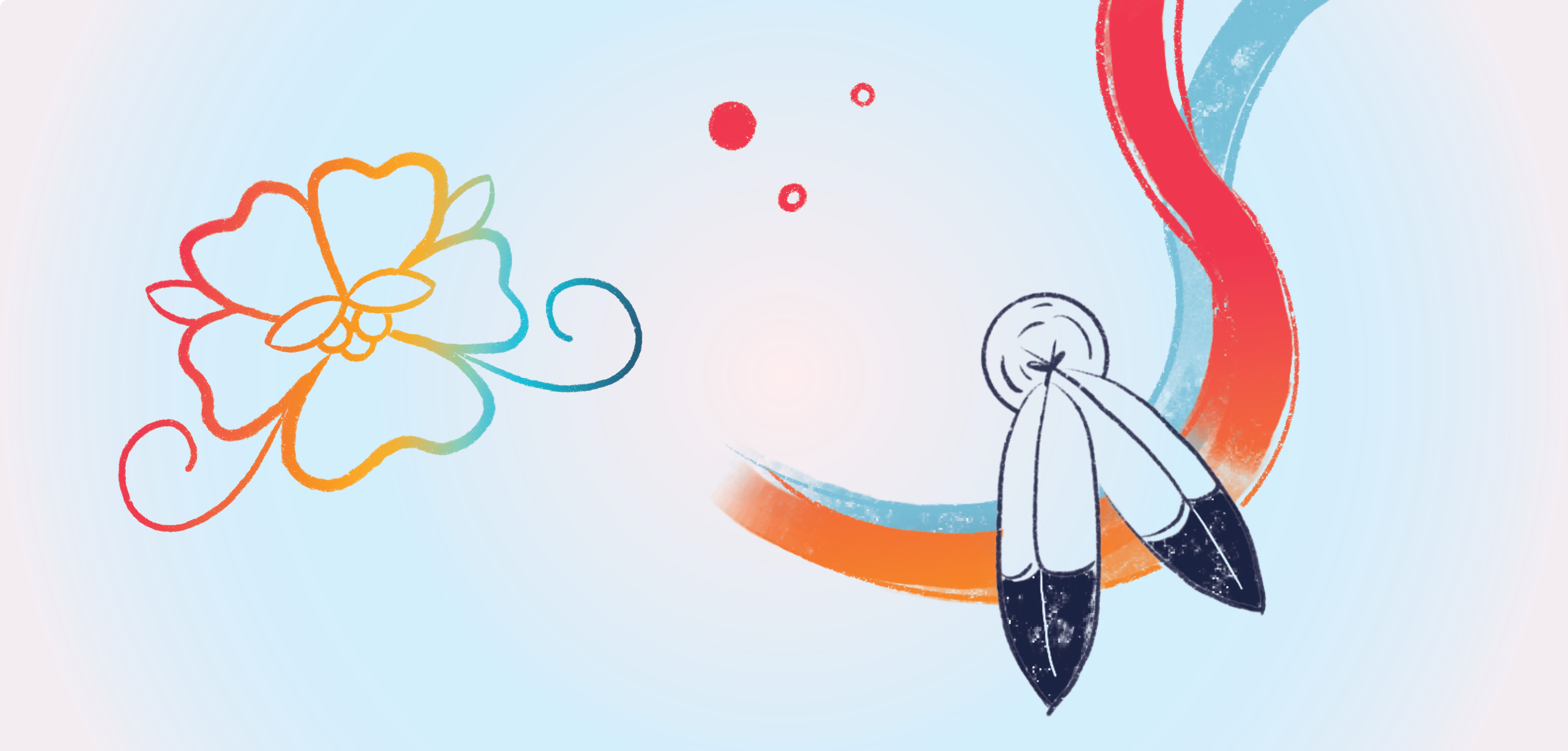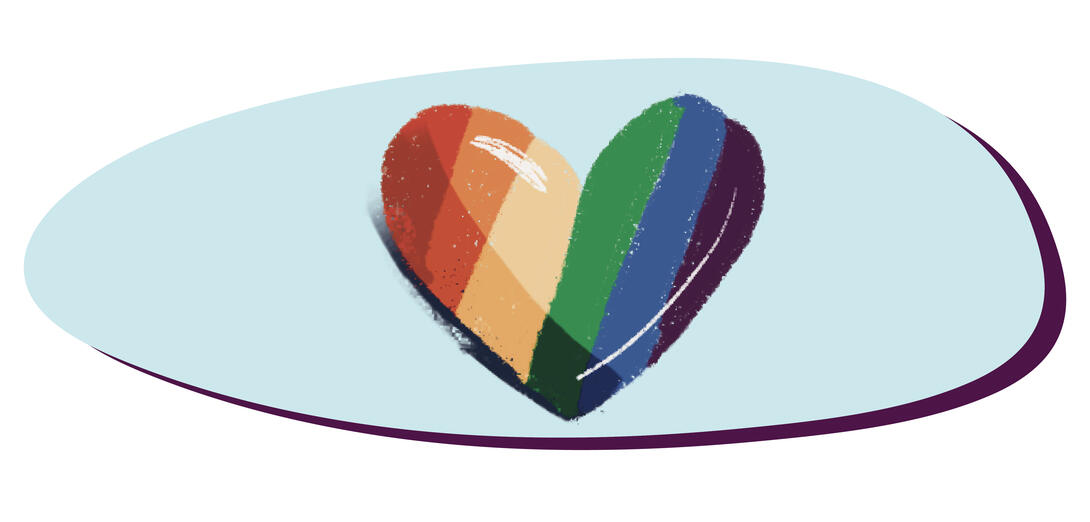An interview with Alex Wilson
How did traditional Indigenous cultures on Turtle Island understand gender and sexual identity?
Communities of people develop their own cultural norms and understandings about gender and sexual identities over generations. Indigenous cosmologies, origin stories, the way we understand our place on and in connection to the earth and other living beings, allow for all kinds of possibility.
Many creation stories include tricksters, beings who shift between animal, plant and human forms to teach us about our place in the universe and our relationship to the land and others. So, not only is there a common understanding in our world views that diversity and possibility exist, but also that transformation can and does happen. Many Indigenous cultures understand that individual identities, including gender and sexual identities, are fluid and can change.
Coming out is about developing a sense of your identity.
Coming in is about connection and community.
When was the term Two-Spirit first used? What does it attempt to capture and how does it fall short?
There are a number of stories about the origin of the term Two-Spirit. What they have in common is that the modern iteration of the term came about in the early 1990s and was accepted by and adopted by the Indigenous LGBTQIA+ community as a self-descriptor that captured the variety of diverse gender and sexual identities that exist in Indigenous cultures. Although the specific interpretation of what being Two-Spirit means varies from culture to culture, the common term is seen as helpful in the promotion of a greater understanding about traditional teachings and identity in a contemporary context.
When the term was first adopted, many who self-identified as Two-Spirit took the term to mean that they possessed some balance of both male and female energy or masculinity and femininity. In our current context, however, the term Two-Spirit represents and celebrates the rich diversity of genders and sexualities found across Indigenous nations and traditions. It recognizes that we’re from this land and we have a responsibility to it and to all our relations. The term is not meant to impose European notions of dualism and a male/female binary.
Was the term Indigiqueer created to provide an option for those who wanted to avoid accidentally reinforcing the binary because of the two in Two-Spirit?
Indigiqueer was coined by Theo Cuthand in 2004, about a decade and a half after Two-Spirit was first used. Some Indigenous queer people don't use the term Two-Spirit because of the confusion about the “two.” For others, identifying as Two-Spirit implies a certain commitment to spiritual, ceremonial and cultural roles or responsibilities. Indigiqueer is a broad term that incorporates sexual and romantic orientation as well as gender identity and gender expression and is preferred by some younger Indigenous queer people.
Can you explain the difference between “coming out” and “coming in”?
Most people are familiar with the concept of coming out. It's generally understood to describe when people come to an understanding about their gender or sexual identity, and are able to declare it to the world. As a process, coming out is about developing a sense of your identity and being able to declare who you are as an individual.
Coming in, on the other hand, is about connection and community. It’s about discovering that who you are is part of something bigger than yourself. The notion of coming in came from my own research with people who identified as Two-Spirit about the processes they went through to understand, validate, express and fully present themselves as a part of their communities. Rather than being an internal, individually focused process, theirs was a process of interconnection, kinship and relationship.
All the people who took part in this study mentioned a common connection to land and place and community when they were young. As they grew older, they were forced to fragment their identity and hide a part of it to fit in (at school, for example). So, coming in for them was about creating a circle or family, in many cases, where they could be authentically included and present.
Do you have any advice for teachers or school leaders?
Being able to fully be who you are can be life-saving for queer youth. Every teacher has a shared responsibility to students to create inclusive spaces where coming in is possible. Sometimes doing this work will be uncomfortable, and teachers might need to put their personal ideology aside. We need to focus on the bigger picture: supporting the young humans in our care.
About the author
Dr. Alex Wilson (she/her) is a professor in the department of Educational Foundations in the College of Education at the University of Saskatchewan. A Two-Spirit member of the Opaskwayak Cree Nation, Wilson is the first Canadian First Nations woman to receive a doctorate from Harvard University. Her research on “coming in” theory has led to land-based learning programs and educational practices that honour the contributions and lives of Two-Spirit people. She is currently chair of 2Spirit Manitoba.
Pronouns
Referring to someone by their correct pronouns is as fundamental as getting their name right.
- The word preferred should not be used when describing the pronouns someone wants you to use to identify them. Who they are and how they want to be addressed are not preferences, they’re an essential affirmation of their identity. Intentionally using the wrong pronouns for someone is beyond careless or disrespectful, it’s hateful.
- Some may ask that no pronouns be used and that they be referred to by their names only. Others may use different sets of pronouns in different contexts (such as at school or in social settings) or may use a combination of “rolling pronouns” (he/they). If you’re uncertain which pronouns to use, ask!
- Sharing your pronouns signals your allyship to gender- and relationship-diverse individuals and helps establish inclusive learning environments.
If you're unsure, just ask!
They/Them
Use they/them to refer to new people until you get a chance to ask them which pronouns they use. It is very important to avoid making assumptions about the genders of people you do not know.
English pronouns
In English, the following singular third-person pronouns are used (among others):
- he/him
- she/her
- they/them
- ey/em
- xe/xem
- ze/zir
- zi/hir
French pronouns
Because French adjectives, nouns and pronouns reflect the masculine or feminine nature of the objects to which they refer, using gender inclusive language in French can be tricky. However, a number of gender neutral pronouns are starting to be more widely used, such as
- iel, im and ul (objective)
- ael, ille and ol (subjective)
More information is available from Egale Canada
- Affirming Adults: A Guide to Supporting Gender Diverse Children and Youth
https://egale.ca/awareness/affirming-adults-guide - Terms and definitions
https://egale.ca/awareness/terms-and-definitions



